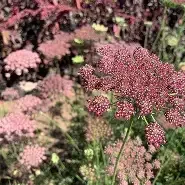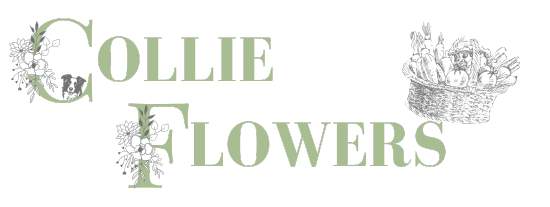Daucas Carota
KEY INFORMATION
Height: to 120cm
Spread: to 45cm
Biennial
Sun-semi shade
Germination: 30 - 90 days
VARIETIES AVAILABLE FROM COLLIE FLOWERS
Purple Kisses
SOWING & GROWING SCHEDULE
Sow Indoors: n/a
Sow Outdoors: October to April
Plant Out: n/a
Blooms: June - September

Daucus carota,also known as Queen Anne's Lace, is the wild ancestor of the domestic carrot and a common wildflower found in dry fields, roadside ditches and open areas.
Daucas carota is easy to grow from seed and performs best in well-drained to dry soils, with low to moderate soil fertility. The lacy flowers appear in shades of old rose pink, through burgundy to chocolate.Up to a thousand tiny flowers are produced in delicate, lacy, flat-topped, clusters up to 10cm wide. They look great en masse and the plant pairs well with almost anything in the garden or in the vase. The plants bloom for most of the summer, often continueing into autumn.
Sow Daucas carota seeds direct outdoors, between October and April. Lightly scatter onto the surface of the soil or compost as the seeds need light to germinate. The seedlings might be mistaken for grass seedlings at first, as the seed-leaves are linear, but the next set of leaves is more distinctive. Keep the soil damp but not wet and do not exclude light. Avoid indoor and module sowing as just like the carrots we grow to eat they have deep tap roots and suffer if moved. When large enough to handle, thin out the seedlings to 10cm apart - although beware this may encourage carrot flies to visit. Water regularly particularly during dry periods until well established.
This biennial plant normally forms a rosette of leaves in the first year and a flowering stalk the second year, although some plants may act as an annual and flower in the first year.
TOP TIP
For winter structure and interest don’t cut back blossoms that have died off, allow seed heads to form. As the seeds ripen, the seed head curls inward to form a 'bird’s nest' shape and turn brown. A small bristly seed is produced at the end of each flower stalk, and once dry they readily latch onto fur or feathers to be disseminated beyond where the seeds would otherwise fall.
